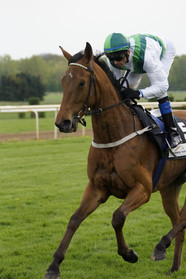DCRaw Batch Files
DCRaw Batch Files for Use with the Windows Explorer 'Send To' Menu
We have created batch files that automatically execute various DCRaw commands via the Windows Explorer 'Send To' menu. All these commands save the converted raw file to the original folder in TIF format except for:
'dcraw - file analysis.bat', which displays various image data in a terminal window but doesn't alter or save the original file.
'dcraw - extract thumbnail.bat', which saves the thumbnail image embedded in the original raw file to the original folder in JPG format. These JPG images are often not much smaller than the raw image itself.
Installation
Download the files from our server here.
Copy the batch (.bat) files to the Windows 'SendTo' folder. In Windows 7 and 8, this can be found here:
C:\Users\<user_name>\AppData\Roaming\Microsoft\Windows\SendTo
Please note that <user_name> is a placeholder for your own user name. In the default view, the <AppData> folder is hidden. The switch for showing hidden and protected system files is located in the 'Folder options' menu.
Use of the batch files also requires you to install DCRaw, which is included with this issues online content. Create a folder called 'dcraw' on your C: drive and copy the dcraw.exe file to it. The complete path to the new file should then read:
C:\dcraw\dcraw.exe
Please note that the batch files require precisely this path. If you wish to use a different path, you have to edit the batch files accordingly. Due to limited access rights, saving dcraw.exe to 'C:\Programs' can cause problems during execution, which is why we recommend you use a separate folder.
Use of the Batch Files
Once installed, the commands corresponding to the batch files appear automatically in the Explorers context menu. You can then apply them as follows:
1. Make sure that you have write access to the folder your images are contained in and select one or more files in the Explorer window. We have provided a sample image called 'test_image_sony_A99.arw' for you to experiment with. The batch files work with any raw format supported by DCRaw.
2. Right-click your selection and select a command in the 'Send To' submenu.
3. A window showing the progress of the processes in use will open.
4. The converted images are automatically renamed and saved as TIF/JPEG files in the original folder.
The DCRaw parameters used with each command are appended to the filenames of the converted files. This makes it simple to compare the results of applying combinations of commands to a single image. Without the renaming step, DCRaw would automatically overwrite the previous version every time you apply a new command.
The 'batch-file-results' folder contains images converted using our batch files for you to compare. We have given these sample files plain text names to make it easier to match them with the commands used to convert them.
Configuration
The batch files can be edited using a text editor -- for example to alter the path to the folder containing the dcraw.exe file or fine-tune the conversion parameters.
A full list of the parameters you can apply can be found at: https://www.cybercom.net/~dcoffin/dcraw/dcraw.1.html
